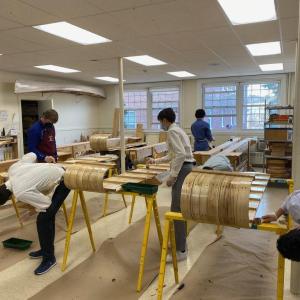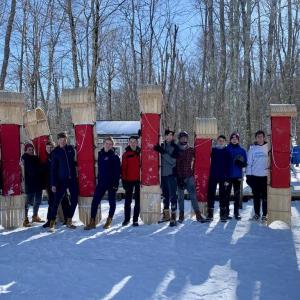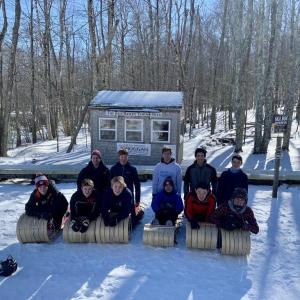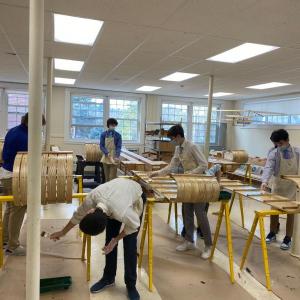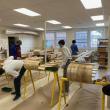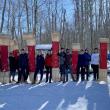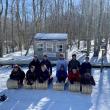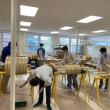Students apply physics to building and racing toboggans
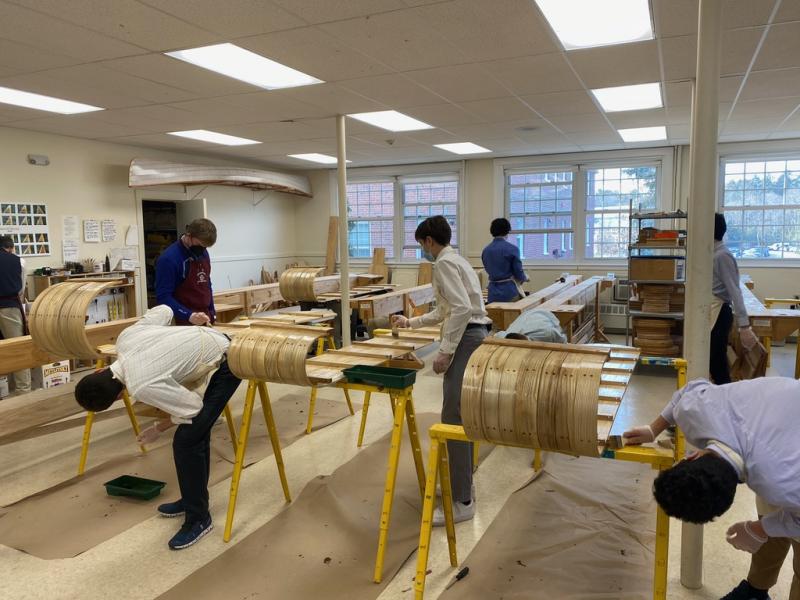 Photo courtesy Tyson Trautz
Photo courtesy Tyson Trautz
 The entire class and their toboggans. Photo courtesy George Tahan
The entire class and their toboggans. Photo courtesy George Tahan
 Photo courtesy George Tahan
Photo courtesy George Tahan
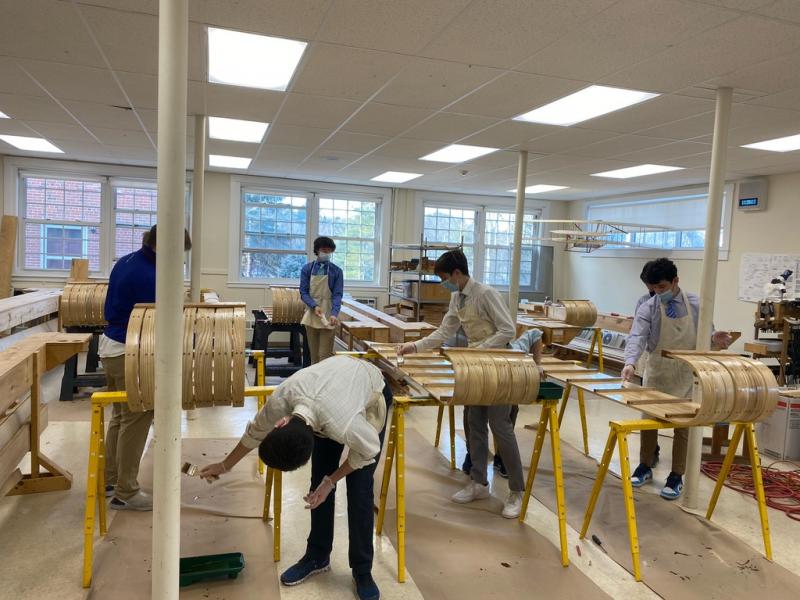 Working on building the toboggans. Photo courtesy Tyson Trautz
Working on building the toboggans. Photo courtesy Tyson Trautz
 Thomas Sheehan and Emerson Walker reached 40 mph on the radar gun at the bottom of the chute. Photo courtesy George Tahan
Thomas Sheehan and Emerson Walker reached 40 mph on the radar gun at the bottom of the chute. Photo courtesy George Tahan
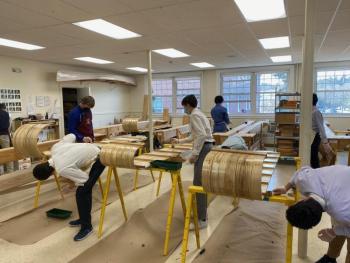 Photo courtesy Tyson Trautz
Photo courtesy Tyson Trautz
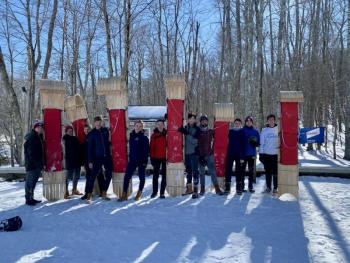 The entire class and their toboggans. Photo courtesy George Tahan
The entire class and their toboggans. Photo courtesy George Tahan
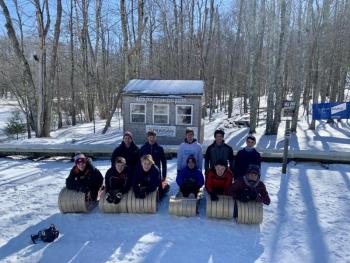 Photo courtesy George Tahan
Photo courtesy George Tahan
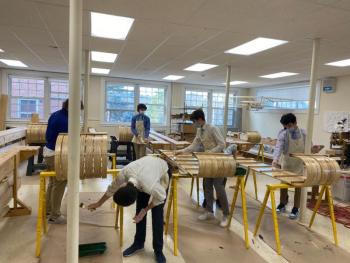 Working on building the toboggans. Photo courtesy Tyson Trautz
Working on building the toboggans. Photo courtesy Tyson Trautz
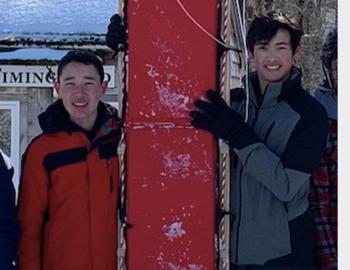 Thomas Sheehan and Emerson Walker reached 40 mph on the radar gun at the bottom of the chute. Photo courtesy George Tahan
Thomas Sheehan and Emerson Walker reached 40 mph on the radar gun at the bottom of the chute. Photo courtesy George Tahan
CAMDEN—Last Sunday, 12 teenage boys from Belmont, Mass., hopped off the bus with Athletic Director George Tahan and arrived at the Camden Snow Bowl with six toboggans, rarin’ to go.
But they weren’t there to practice for the U.S. National Toboggan Championships. The boys are ninth-grade students from Belmont Hill, a private school for boys grades 7-12 in Belmont, Massachusetts. As part of a science class called “Applied Physics and Design,” the students not only hand-built each toboggan, but also challenged themselves on the 400-foot chute to see whose toboggan could race the fastest.
“We’ve been doing this class for the last 10 years, coming up to Maine in the winter to test the toboggans out,” said science teacher Tyson Trautz, who grew up in Old Orchard Beach.
“When I lived in Maine, I went with a couple of buddies to the National Toboggan Championships for several years in a row, so the impetus for the project stemmed from my experiences in Camden,” he said, noting that experience prompted him to design a class around toboggan making and racing.
The students learned the design process using the specifications that the Toboggan Championships use.
“We follow their rules on length, width, the thickness of wood, and curl diameter,” said Tahan. “We give all of those parameters to the boys and then they design a toboggan on CAD-based software called Fusion 360. After designing it virtually, they did a 3-D print as a scale model. Then, they full-scale built it over the course of a semester with the goal at the end of the semester to travel up to the Camden Snow Bowl and test the toboggans out.”
The trip takes about 10 hours round trip, starting at 6:30 a.m. While it’s a lot of fun, the boys are still working on physics problems.
“Before we go up, we give them a calculations sheet and put up all of the specs for the chute, so they have to calculate their potential energy, their kinetic energy, their momentum, and mass,” said Trautz. “They have to weigh themselves and weigh their toboggans, and then they have to predict their velocity final at the bottom of the chute.”
“We also judge them on the best design and craftsmanship,” said Tahan. “But, the prize all of the boys want to win is being the fastest.”
Each team of two students takes their toboggan to the top of the chute. That team races down the chute, competing against the other teams.
“As they go down we have a radar gun and clock their speeds,” said Tahan.
Bragging rights for the fastest speed this year goes to Thomas Sheehan and Emerson Walker clocking in at 40 m.ph. down the chute.
What a fun way to do physics and to use experiential education in design, woodworking, science, and physical competition.
“It’s not only teaching them to use their hands to build something, which most kids don’t know how to do today, but it also teaches them problem-solving using design and physics,” said Tahan.
When the semester is done, each team decides who gets to take the toboggan home. If both boys want the toboggan, it’s a coin flip to determine the winner. If neither boys want it, the school auctions the toboggans off in a fund-raising event.
And a little memento of Belmont Hill will stay with the Snow Bowl. The school is planning on donating one of the student-built toboggans to the Camden Snow Bowl for rentals or for use, with the Belmont Hill school emblem and each boy’s name on the headstock of the toboggan.
Head out for the 31st U.S. National Toboggan Championships this year. For more information visit: Camden Snow Bowl.
Kay Stephens can be reached at news@penbaypilot.com

